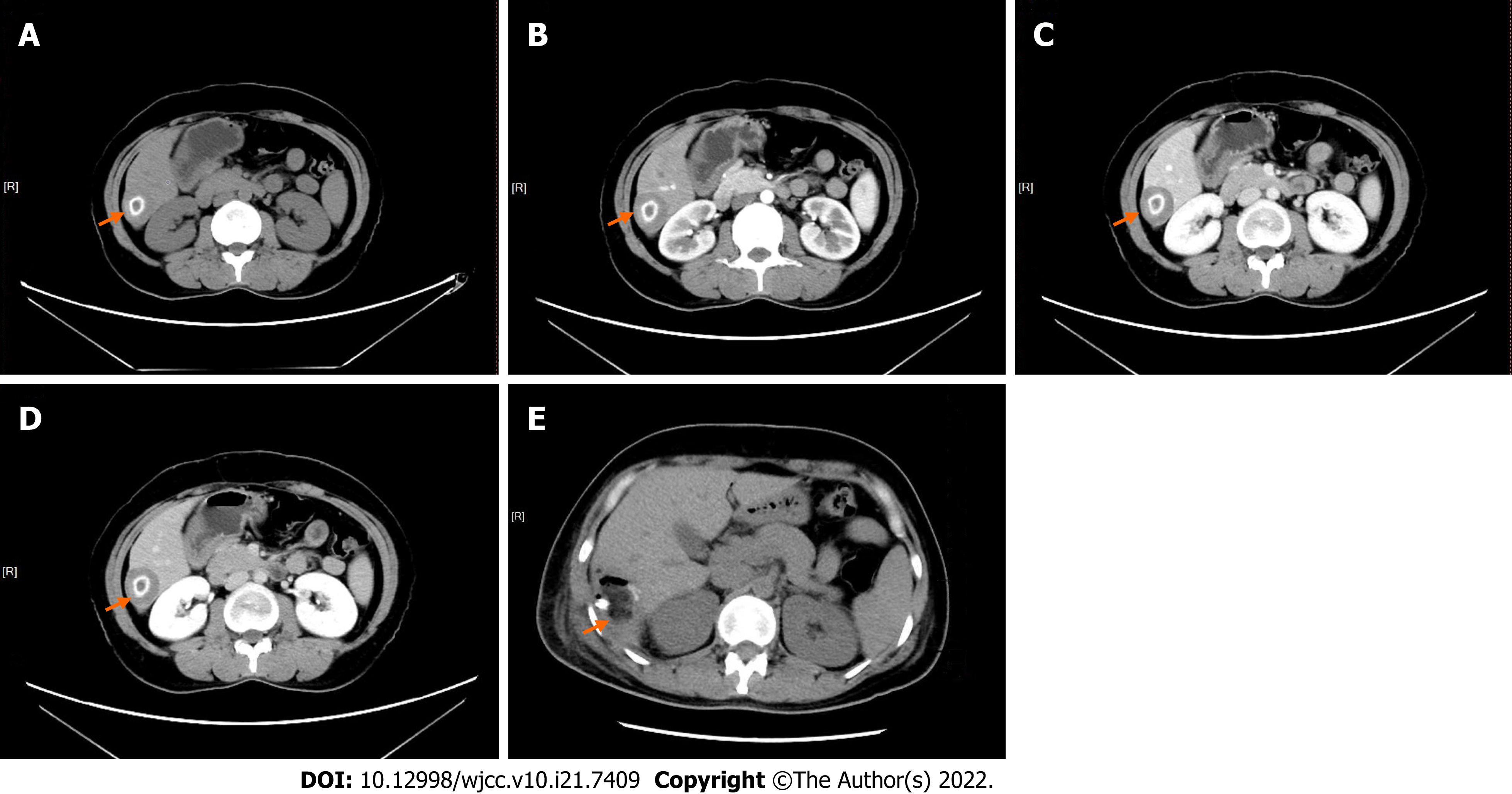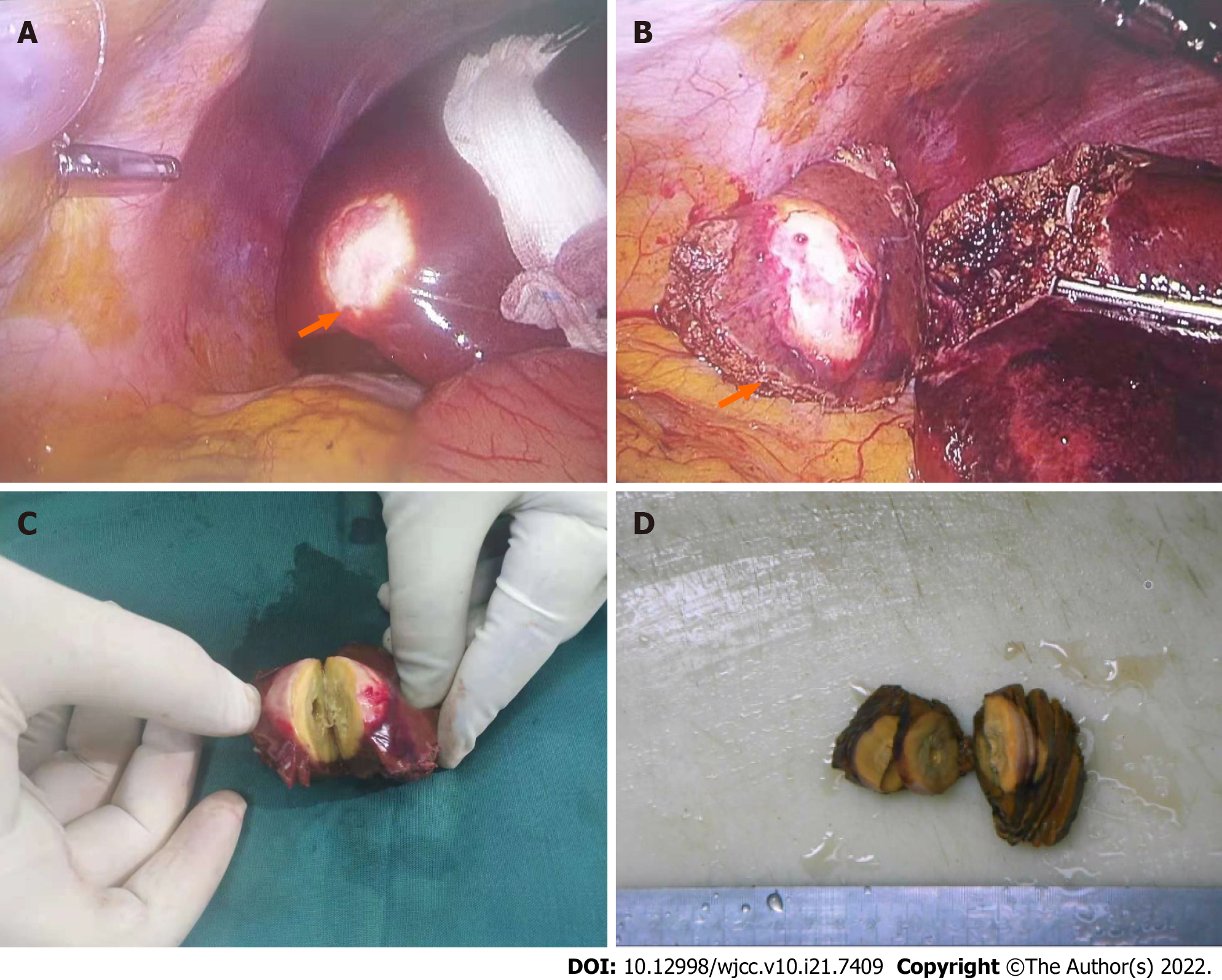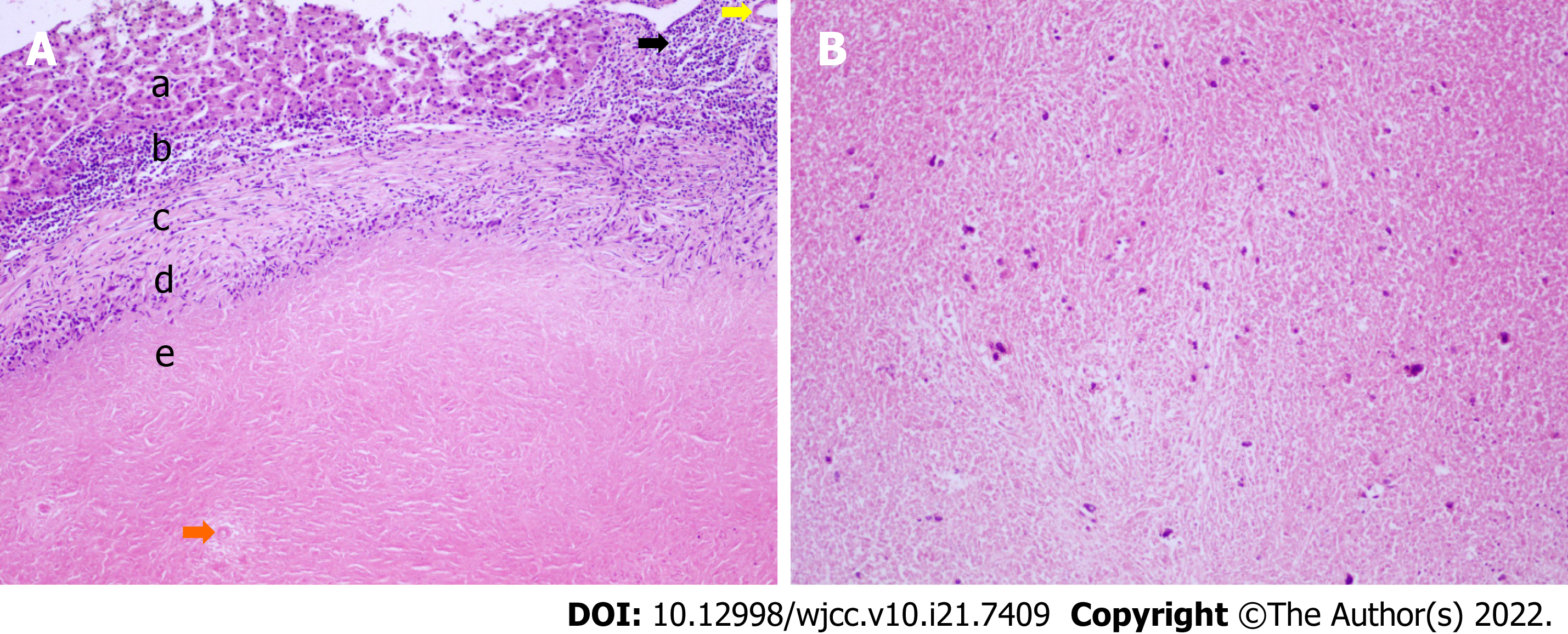Copyright
©The Author(s) 2022.
World J Clin Cases. Jul 26, 2022; 10(21): 7409-7414
Published online Jul 26, 2022. doi: 10.12998/wjcc.v10.i21.7409
Published online Jul 26, 2022. doi: 10.12998/wjcc.v10.i21.7409
Figure 1 Computed tomography images of the lesion (orange arrow).
A: Plain scan image showing a slightly low density, round lesion and "ring"-like calcification in the lesion, measuring 3.4 cm × 2.7 cm; B: Arterial phase; C: Venous phase; D: Delayed phase; E: After the operation. The high signal in the surgical area was the manifestation of drainage tube, and the lesion had no enhancement in the arterial, venous, and delayed phases.
Figure 2 Laparoscopic surgical resection of solitary necrotic nodules of the liver (orange arrow).
A: The lesion was located in the liver and invaded the liver capsule; B: The lesion was completely excised; C and D: Necrotic tissue was seen inside the lesion after incision. An irregular liver tissue after surgical resection (7.6 cm × 5.2 cm × 2.5 cm) and a grayish-yellow nodule (4.2 cm × 3 cm × 2.9 cm) are shown.
Figure 3 Pathological examination of the solitary necrotic nodule of the liver.
A: Microscopic view of necrotic nodules wrapped by dense fibers in the liver tissue, surrounded by the infiltration of lymphocytes and histiocytes (HE staining, 40 × magnification). a: Normal liver tissue; b: Lymphocyte; c: Proliferation of fibrous tissue cells; d: Tissue cells; e: Necrotic tissue; Vascular necrosis (orange arrow); Lymphatic tissue (black arrow); Bile duct tissue (yellow arrow); B: Phagocytes are visible (HE staining, 100 × magnification).
- Citation: Bao JP, Tian H, Wang HC, Wang CC, Li B. Solitary necrotic nodules of the liver with "ring"-like calcification: A case report. World J Clin Cases 2022; 10(21): 7409-7414
- URL: https://www.wjgnet.com/2307-8960/full/v10/i21/7409.htm
- DOI: https://dx.doi.org/10.12998/wjcc.v10.i21.7409











